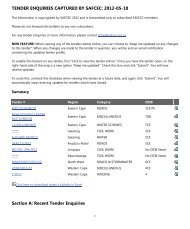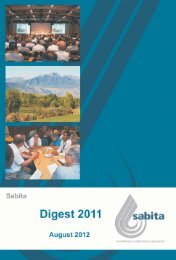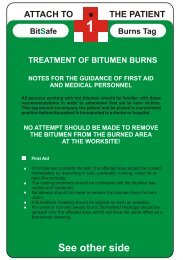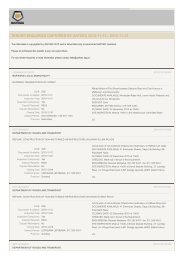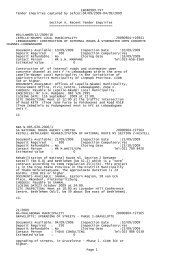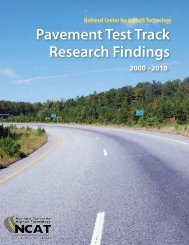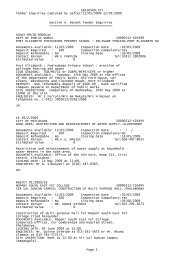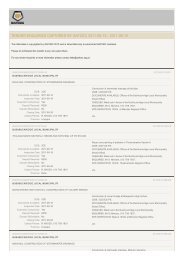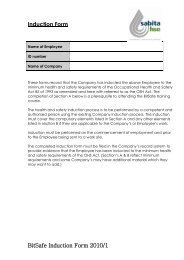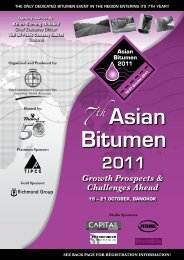DIGEST 2006 - Sabita
DIGEST 2006 - Sabita
DIGEST 2006 - Sabita
Create successful ePaper yourself
Turn your PDF publications into a flip-book with our unique Google optimized e-Paper software.
• International specifications/<br />
trends etc. and their<br />
appropriateness for South<br />
Africa.<br />
From this initial process it became<br />
evident that the revision process<br />
could not just be confined to a<br />
limited updating exercise. Over<br />
and above identifying some of the<br />
existing criteria that required<br />
amendment, major additions to<br />
the document were required to<br />
provide additional guidance to<br />
practitioners, especially the newer<br />
entrants into the industry.<br />
Amendments<br />
Some of the more significant<br />
proposed changes to the existing<br />
document are detailed below:<br />
• Applicability of current<br />
classes: Even with the benefit<br />
of hindsight, the original<br />
decision to limit the number<br />
of modified binder classes<br />
was a good one. With the<br />
acceptance that the binder is<br />
but one component of the<br />
final product, the current<br />
trend internationally is to<br />
reduce the existing number<br />
of classes to a more<br />
manageable and pragmatic<br />
one. Notwithstanding the<br />
above however, it has to be<br />
accepted that, while<br />
elastomers (SBR, SBS & B-R)<br />
are still the most commonly<br />
used modifiers, other<br />
products such as plastomers<br />
(EVA), natural hydrocarbons<br />
and Fischer-Tropsch (FT)<br />
waxes are currently being<br />
more widely utilised. As such,<br />
the present binder<br />
classification matrix will be<br />
expanded where possible to<br />
include these products;<br />
• Specialised applications: With<br />
the increased use of modified<br />
binders in a variety of road<br />
applications, the guidelines<br />
will be expanded to<br />
incorporate these specialised<br />
binders, such as modified<br />
emulsions used in<br />
microsurfacing and bond<br />
coats for UTFC’s, and high<br />
modulus and fuel resistant<br />
binders used in hot mix<br />
asphalt;<br />
• Appropriateness of current<br />
test protocols: While the<br />
existing test protocols and<br />
associated property limits are<br />
not fundamentally<br />
performance based, they<br />
have been derived from<br />
practical experience gained<br />
over some considerable time.<br />
It is envisaged that, while<br />
some of the current tests<br />
classified as “Report Only”<br />
will be removed, the test<br />
regime for the different<br />
classes will be consolidated.<br />
This is to ensure that we use<br />
the most appropriate<br />
measures, in which the<br />
binder is expected to perform<br />
in-service and during<br />
handling, to control the<br />
binder’s performance;<br />
• Appropriateness of current<br />
product property limits: A<br />
number of amendments to<br />
the existing product property<br />
requirements have been<br />
identified, some of which are:<br />
º “tightening up” the<br />
allowable limits on some<br />
properties;<br />
144



